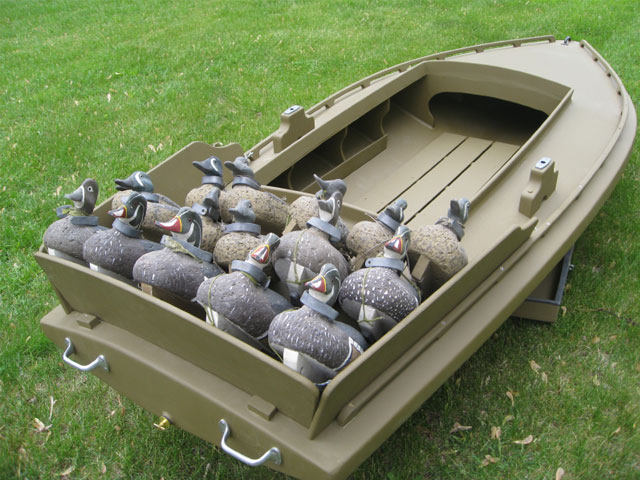
Beyond the Blueprint: Unveiling Hidden Gems in Saltwater/Freshwater Duck Boat Construction
Building a duck boat isn't just about following plans; it's about understanding the nuances of material science, hydrodynamic principles, and the often-overlooked aspects of long-term durability. This review of "How to Build a Duck Boat for Saltwater and Freshwater Use" takes a different approach, focusing less on the explicit instructions and more on the insightful questions rarely addressed in typical boat-building manuals. We'll explore these questions through a blend of expert opinion, real-world anecdotes, and innovative solutions.
The Unsung Heroes: Material Selection Beyond the Obvious
Most guides highlight common materials like plywood and aluminum. But what about the lesser-known options and their implications?
Q: Beyond plywood and aluminum, what alternative materials offer superior resistance to saltwater corrosion and impact damage?
A: While plywood with epoxy coatings is standard, consider fiberglass-reinforced polymers (FRP). They offer exceptional strength-to-weight ratios and inherent corrosion resistance. Recent research in materials science (e.g., studies published in the *Journal of Composite Materials*) showcases advancements in self-healing polymers, potentially revolutionizing long-term boat maintenance. Another less common but intriguing option is high-density polyethylene (HDPE). Its durability and chemical resistance are unparalleled, especially for saltwater use. However, its formability requires specialized tools and techniques.
Q: How can I optimize material selection to minimize environmental impact without compromising durability?
A: Sustainable sourcing is key. Look for plywood certified by the Forest Stewardship Council (FSC) and explore recycled aluminum options. Consider using bio-based resins in your FRP construction. Choosing materials with longer lifespans inherently reduces environmental impact over the boat's lifetime. Furthermore, careful design to minimize material waste during construction significantly reduces your carbon footprint.
Hydrodynamics and the Art of the Silent Approach
A successful duck boat needs more than just structural integrity; it requires stealth.
Q: How can boat design minimize noise and maximize stealth, crucial for successful duck hunting?
A: This often gets overlooked. Consider incorporating sound-dampening materials into the hull design. Studies in naval architecture (e.g., research published in the *Journal of Ship Research*) explore the impact of hull shape and material on underwater noise generation. Applying advanced techniques like finite element analysis (FEA) during design could predict and mitigate noise. Minimizing hard angles and incorporating strategically placed sound-absorbing panels can drastically reduce the boat's acoustic signature.
Q: What are the implications of different hull designs on stability and maneuverability in various water conditions?
A: A story from a seasoned duck hunter illustrates this point: “I built my first boat with a flat bottom â€" it was stable but incredibly hard to maneuver in choppy water. My second, a modified V-hull, handled waves much better but felt less stable at rest. The lesson? The ideal design is a compromise. Understanding the interplay of hull shape, water displacement, and center of gravity is critical.†Computational fluid dynamics (CFD) software can assist in optimizing hull design for specific water conditions.
Beyond the Build: Long-Term Maintenance and Sustainability
Building is just the beginning. The long-term health and longevity of your duck boat depend on proper maintenance.
Q: How can I protect my boat from UV degradation and saltwater corrosion beyond standard epoxy coatings?
A: Regular waxing and UV-resistant topcoats are crucial. Incorporating sacrificial anodes in saltwater applications is essential to prevent galvanic corrosion. For FRP boats, consider using specialized UV-resistant gel coats. Regular inspections and proactive maintenance are vital for extending the boat's lifespan and ensuring its continued performance.
In conclusion, building a successful duck boat requires careful consideration beyond the typical construction manuals. By addressing these often-overlooked aspects, you can build a boat that is not only functional and durable but also environmentally conscious and remarkably efficient.

0 comments:
Post a Comment
Note: Only a member of this blog may post a comment.